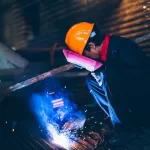Welding safety equipment is equipment that functions to protect the welder from health or safety risks in the workplace. This equipment includes items such as welder helmets, gloves, eye protection, high-visibility clothing, safety footwear, and respiratory protective equipment.
Welding Safety Equipment Checklist
Welding Town
Safety is always the highest priority at any welding job site. Welder always finds a way to fix a less-than-perfect piece of a welding project with a few extra fixes. However, injuries to the welder can be permanent.
Hazards in welding work include hot metal burns, arc burns, hearing loss, loss of eyesight, and dismemberment. All these potential hazards must be taken seriously through equipment for welding safety. That is the main reason there are many safety product offerings to choose from as mandatory equipment for welder safety and security.
It’s important to note that these safe products are manufactured and marketed according to industry standards. Therefore, before starting a welding project operation, the following is a must-have welding safety equipment that will be worn during working hours.
Welding Safety Equipment Checklist :
If you want to know welding safety tools for welders, this is the list.
1. Welding Helmet.
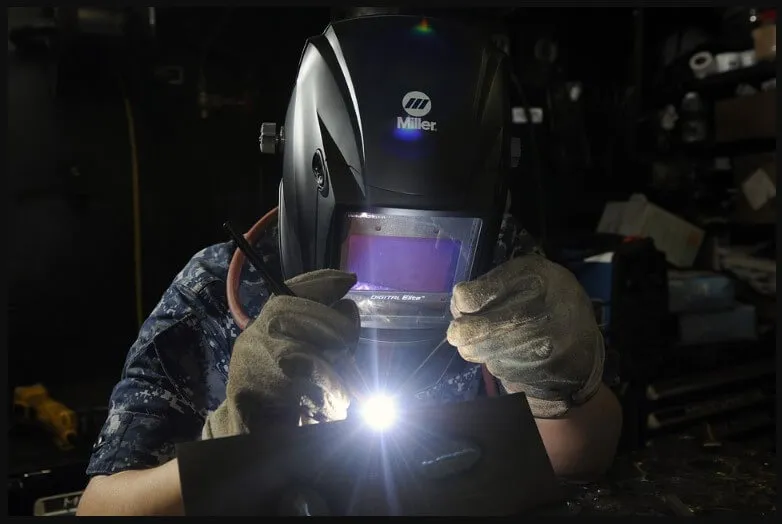
A welding helmet or what is commonly referred to as a “hood” is one of the most important pieces of personal protective equipment a welder must wear. The perfect helmet protects the eyes and skin not only from sparks but also from ultraviolet which has the potential to destroy vision and the infrared rays emitted by the arc.
Welding helmets are currently available in various colors and designs which are visually appealing. However, this visual aspect is still combined with a functional aspect that requires a light helmet and can be worn comfortably for a full day’s work. The ideal helmet is about 20 oz lighter to reduce the risk of neck pain or fatigue after wearing the helmet all day.
2. Auto-Darkening Welding Helmet.
One of the welding helmet model options for the welder is an auto-darkening welding helmet which is more sophisticated. This helmet automatically adjusts the shadow from the inactive state or full exposure to the active state or the lighting turns completely dark when the arc starts. This helmet function protects the welder from harmful light emission thanks to LCD (liquid crystal display) technology which automatically darkens.
Recently, several manufacturers have developed technology in auto-darkening welding helmet that changes the color spectrum of the lens to give the welder a more natural view. This feature increases the welder’s ability to control and reduces eye fatigue as a result of welding. Usually, the welder is given a choice between shades 9 to 13. This scale allows the welder to optimize color for comfort during work.
3. Welding Goggles.
The welding process always produces intense ultraviolet and infrared as visible light waves. However, indirectly UV and infrared waves can be seen and can produce eye injuries to the welder. Welding goggles provide temporary eye protection while the welder is welding and cutting.
The function of this safety equipment is intended to protect the eye not only from heat and optical radiation but also from the flying debris sparks generated by welding. Welding goggles are designed with a choice of different lens numbers to suit your needs. Filters suitable for gas welding are not suitable for arc welding. Because arc welding requires darker lens shades.
4. Welding Face Shields.
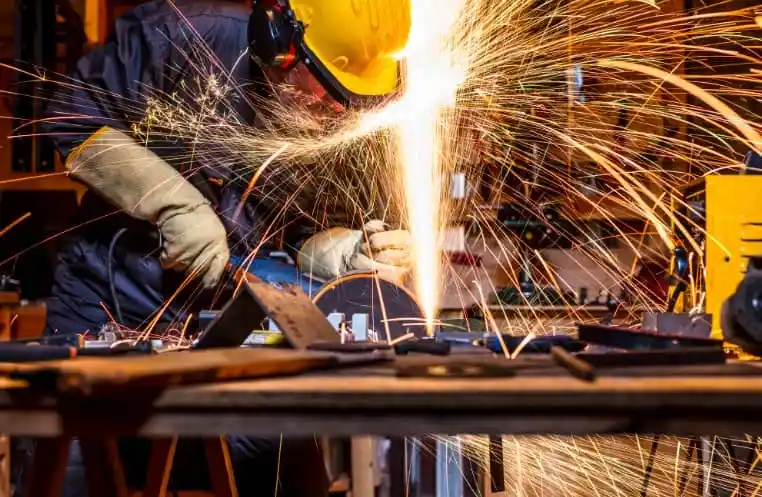
Additional eye protection needed in addition to those already mentioned above is welding face shields. This equipment is necessary to protect the welder from the safety risks of hot sparks and flying metal pieces that could cause serious problems later. This face shield is made of a plastic material that is lightweight and strong and is not affected by heat, cold, or humidity.
5. Hearing Protection.

Noise hazards are common in welding operations. Prolonged noise exposure can indirectly cause hearing loss. The use of hearing protection is required when noise exposure exceeds the average sound level of 90 dBA within 8 hours.
Many hearing protection options can keep a welder from getting noisy in a welding laboratory. There are at least three types of hearing protectors available, namely earplugs, semi-insert earplugs, and earmuffs. The choice of hearing protection depends on some factors, one of which is noise level. However, the most important factor is that the hearing protector should keep the noise out of the ear and the welder is comfortable when wearing it.
6. Welding Respirator.
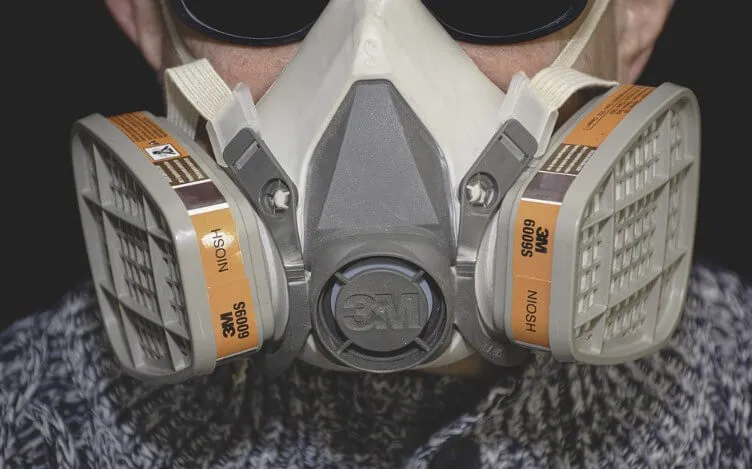
During the welding process, a residue is formed in the form of welding fumes consisting of very fine and dense metal oxide particles. The intensity of the weld fumes depends on many factors, such as the composition of the material being welded and the welding method chosen.
The best solution is to use a welding respirator as a protective device. Choosing the best welding respirator is a must for any amateur or professional welder. Currently, various designs can be selected to adjust the level of smoke in the workplace.
These include half-mask respirators, powered water-purifying respirators, and supplied air respirators. Good respirators must be NIOSH-certified as an approved standard. By wearing a breathing protector, a welder can reduce the risk of serious health risks such as metal fume fever, bronchial asthma, pulmonary fibrosis, and lung cancer.
7. Welding Gloves.
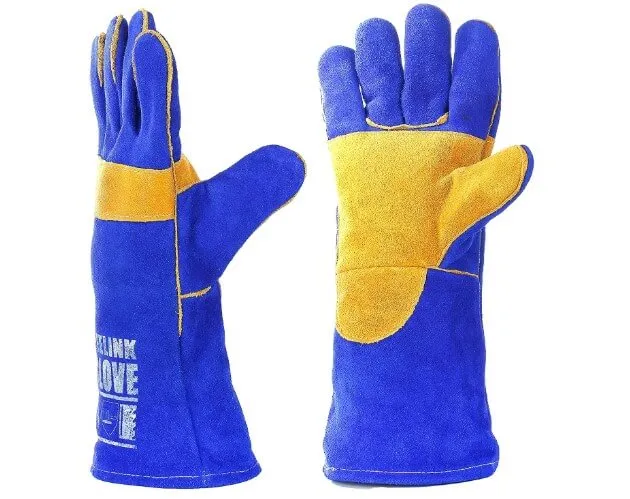
The next protective equipment is welding gloves. These gloves will help protect the welder’s hands from welding hazards. For example, it protects the welder from electric shock, extreme heat, ultraviolet, and infrared radiation and provides a stronger grip.
Welding gloves made of leather are very suitable to be selected based on a welding process that involves high temperatures. In terms of durability, these gloves are categorized into three types. First, TIG welding gloves are made of goat, cow, or pork skin. Second, MIG welding gloves are made of pig, cow, or deerskin. Finally, stick welding gloves are made of cow or deer leather.
8. Welding Jacket.
The welder needs to consider the various options for the choice of welding apparel required because each type has a different application purpose. However, its main function remains the same, which is to help protect the welder’s clothing from sparks generated during welding.
Jackets should be made with fire-resistant fabrics which this characteristic is suited to the protection of a work environment which is always exposed to intense sparks, high heat, and molten metal. Some of the most common types of materials are flame-resistant cotton, leather, and WeldX fabrics which combine cotton and leather materials.
Cotton jackets can provide the perfect combination of protection power, low cost, and comfort. However, this type of jacket is less than optimal providing sufficient protection for all welding operations. Leather jackets have been considered a fixture for welding with excellent resistance and fire protection.
WeldX jacket comes as an innovation that provides benefits from the advantages of cotton and leather. This jacket is lighter than leather and the inside of the fabric improves comfort like cotton and reduces the potential for injury to the welder.
9. Welding Hats.
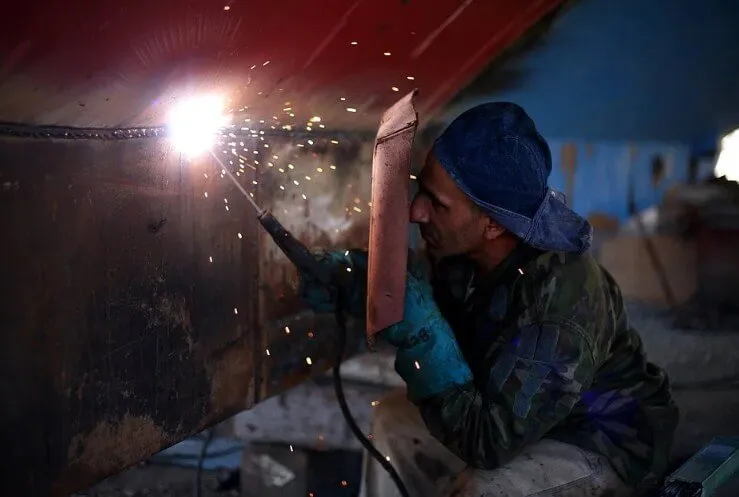
The next equipment for welding safety is welding headwear which is used to keep the welder’s head and hair safe during welding operations. Usually, this equipment is designed in various shapes and sizes which are used as an alternative to a helmet when the welder is doing some light work.
The main function of this equipment is to provide extra protection while reducing the discomfort caused by a welding helmet. Welding headwear is usually made of cotton and sewn with cotton thread to minimize the risk of flammability.
10. Welding Aprons.
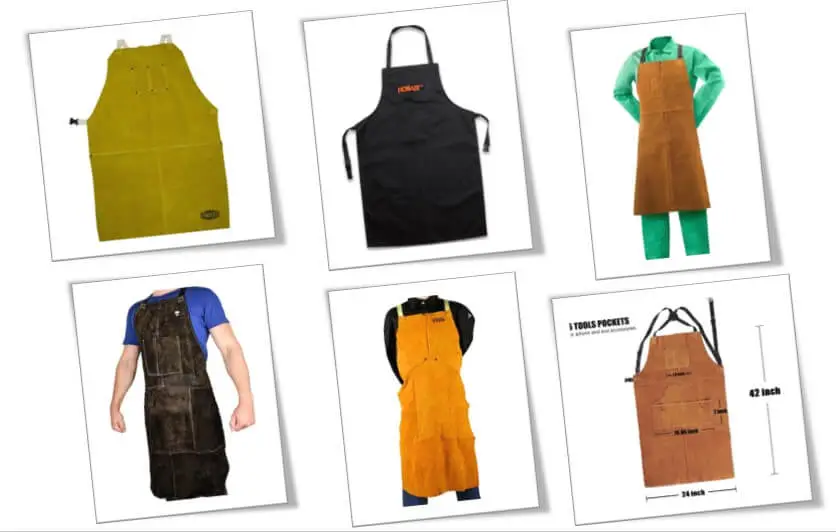
A good quality welding apron should be made from durable materials such as cowhide or pork skin. For welding, never use or wear an apron that uses a plastic or polyester type as it can melt onto the welder’s skin. Apron with flame-resistant material is the perfect choice where the job of the welder is always associated with high heat or open flames.
There are two basic types of welding apron, namely the half apron which protects the waist down, and the full apron which protects the entire front side of the welder and looks similar to a chef’s apron. Materials in the form of heavy denim and cotton were chosen as the basic materials for making aprons.
11. Welding Sleeves.
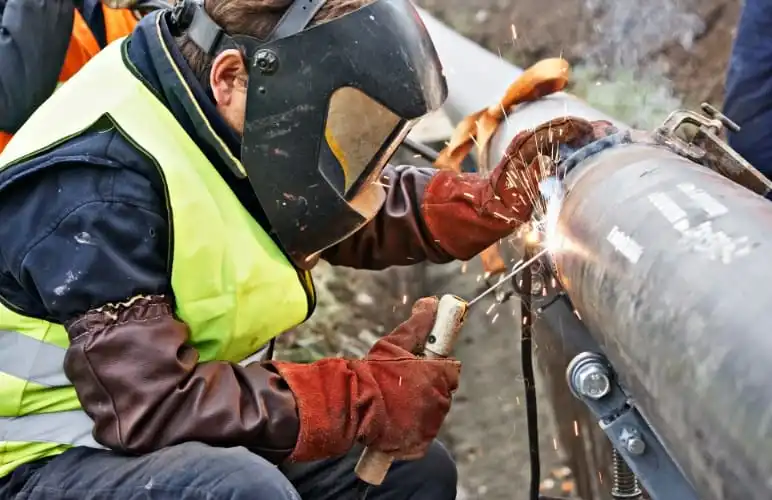
Most welder chooses a welding jacket because it can protect the entire tuber when welding. However, there is more efficient protection using welding sleeves. Its function is the same as the welding jacket, which is to protect the body and arms of the welder from all the sparks that fly out while welding.
There are three materials used for making welding sleeves and each has its advantages. Leather is the single most common material found in welding apparel because of its rough texture, scratch resistance, and flame-retardant base.
Cotton, canvas, or denim fabrics are less than optimal as fireproof materials, but the level of fire resistance increases when processed with chemicals. Kevlar is an innovation that creates protective clothing that can withstand cuts, extremely high temperatures, and wet welding.
12. Welding Boots.
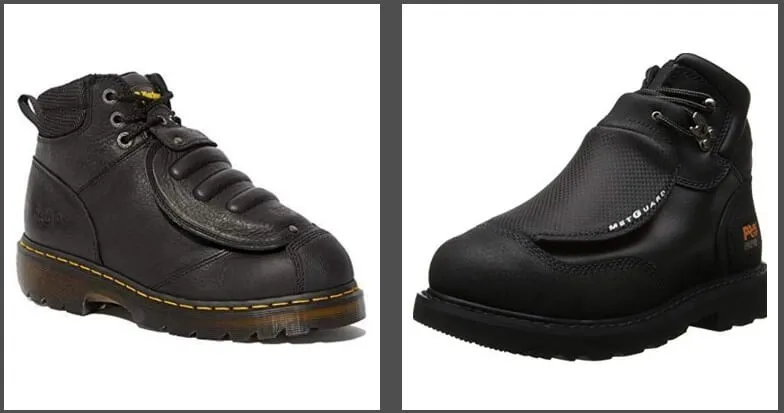
Welding work requires work shoes that can protect the welder from sparks and the possibility of heavy objects falling onto the feet. At first glance, welding boots are similar to ordinary boots, but the layer of leather covering the laces and the top makes them different.
A good pair of welding boots serves two main functions. First, leather welding boots are not only heat resistant but also waterproof. Second, welding boots allow the welder to work for hours without making the foot hurt or numb. Therefore, the welder can weld under optimal conditions without any problems.
The welding job may very well present some dangers to the welder and to others around him. Therefore, it is important for the welder to be aware of the risks and dangers posed by welding, and to understand what precautions can be taken to protect himself.
Welding safety equipment has functioned as a preparation for when risks and hazards occur. To begin with, protective clothing and equipment should be worn during all welding operations from head to toe.









